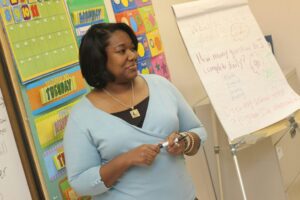A professional learning community (PLC) is a group of educators who work together to improve their teaching skills and student outcomes. PLCs are based on the idea that teachers can learn from each other and collaborate on common goals, challenges, and strategies. PLCs are not just meetings or workshops, but ongoing processes of inquiry, reflection, and action that involve the whole school community.
Benefits of Professional Learning Communities for Teachers and Students
PLCs can provide many benefits for teachers and students, such as:
- Enhanced professional growth: PLCs allow teachers to share their expertise, learn from their peers, and access new resources and research. PLCs can also foster a culture of innovation, risk-taking, and feedback that encourages teachers to try new practices and improve their instruction.
- Increased student achievement: PLCs help teachers align their curriculum, instruction, and assessment to the standards and expectations of their grade level and subject area. PLCs also help teachers monitor student progress, identify learning gaps, and provide timely and targeted interventions and extensions. PLCs can also promote student engagement, motivation, and collaboration by creating more relevant and meaningful learning experiences.
- Improved school culture: PLCs create a sense of shared vision, values, and responsibility among teachers and school leaders. PLCs can also enhance trust, communication, and collaboration within and across grade levels and departments. PLCs can also foster a positive and supportive climate for teachers and students, where everyone feels valued and respected.
How to Create and Sustain an Effective PLC in Your School
Creating and sustaining an effective PLC in your school requires planning, commitment, and support from all stakeholders. Here are some steps you can take to start or improve your PLC:
- Establish a clear purpose and goals: Define what you want to achieve as a PLC and how you will measure your success. For example, you might want to focus on a specific content area, skill, or strategy that is challenging for your students or teachers. You might also want to align your PLC goals with your school or district goals and priorities.
- Select a facilitator and a schedule: Choose a facilitator who can lead the PLC sessions, guide the discussions, and keep the group focused and on track. The facilitator can be a teacher, a coach, or an administrator, depending on the needs and preferences of the group. You also need to decide how often and how long you will meet as a PLC, and when and where you will meet. You might want to schedule regular and consistent meetings, such as once a week or once a month, and find a convenient and comfortable location, such as a classroom or a library.
- Create a collaborative and respectful culture: Establish norms and expectations for how you will work together as a PLC, such as how you will communicate, listen, share, and disagree. You also need to create a safe and trusting environment, where everyone feels comfortable to express their ideas, questions, and concerns. You also need to respect each other’s time, opinions, and expertise, and celebrate each other’s successes and challenges.
- Engage in a cycle of learning: Follow a systematic and structured process of learning that involves four steps: collect and analyze data, set and monitor goals, learn and implement strategies, and reflect and adjust practices. You can use various sources of data, such as student work, assessments, observations, and surveys, to identify your strengths and areas of improvement. You can also use SMART goals, which are specific, measurable, achievable, relevant, and time-bound, to guide your actions and track your progress. You can also use various resources, such as books, articles, videos, and experts, to learn new strategies and techniques. You can also use various methods, such as modeling, coaching, and peer observation, to implement and practice what you learned. You can also use various tools, such as journals, portfolios, and rubrics, to reflect on your impact and adjust your practices as needed.
- Seek and provide support: Seek and provide support from and to your PLC members, as well as other stakeholders, such as school leaders, parents, and students. You can ask for and offer feedback, advice, and encouragement to your PLC colleagues, and acknowledge and appreciate their contributions. You can also communicate and collaborate with your school leaders, and ask for and receive their guidance, resources, and recognition. You can also involve and inform your parents and students, and solicit and respond to their input, needs, and expectations.
Conclusion
A professional learning community is a powerful way to enhance your professional growth and student achievement. By working together with your colleagues, you can create a culture of collaboration, learning, and improvement in your school. You can also make a positive difference in the lives of your students and yourself.
I hope this article has helped you understand the concept and importance of a PLC, and inspired you to join or start one in your school. Thank you for reading and happy learning!







